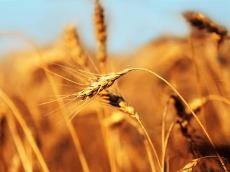|
|
TODAY.AZ / Society
Novruz knocking the door with ‘Wind Tuesday’
07 March 2017 [10:00] - TODAY.AZ

By Azernews
By Amina Nazarli
As Novruz approaches, festive passions take over.
First two Tuesdays -- Su Chershenbesi and Fire Od Chershenbesi - of the Novruz Bayram, symbolizing the coming of spring and awakening of the nature, have already been left behind.
March 7 marks the third of four magic Tuesdays -- Yel Chershenbesi (Wind Tuesday).
Celebrations of festive Novruz, which is marked on March 21 begin a month before the actual holiday with four natural elements such as Su Chershenbesi (Water Tuesday), Od Chershenbesi (Fire Tuesday) Hava Chershenbesi (Wind Tuesday) and Torpaq Chershenbesi (Earth or Last Tuesday).
As in previous Chershenbes, in Wind Tuesday people light bonfires and jump over it regardless of the age and gender.
Wind Tuesday has also its own traditions, including the traditional song, "Yel baba" ("Father of Wind"). "Yel baba" is related with the belief of ancient people in the God of Wind. Moreover, "Yel baba" ceremonies are linked with the traditions of farming.
The legend tells that four different winds that regularly blow and sleep underground come together on Wind Tuesday. They go out to the surface and wake up and put into motion the earth, the water and the fire. The four winds are the Khazri, a cold northern wind, the Gilavar, a mild, southern wind, Agh Yel (the White Wind) and Gara Yel (the Black Wind), both hot, dry summer winds. According to mythology, Agh Yel appears in a white dress, Gara Yel in a black one, Khazri in a blue one and Gilavar in a red one.
Another tradition is that on this Tuesday everyone who wants to know whether or not his or her wish will come true stands under a willow tree and calls "Yel baba". If the wind blows and the branches touch the ground, it is believed that the dream will come true.
Third Tuesday before Novruz identifies the awakening of nature, the beginning of spring field work, and the arrival of a new growing season. Therefore, people grow an integral part of Novruz -- Semeni, a wheat germ, which symbolizes life, wealth, health as well as well-being.
It is also the first sign of the coming of spring and almost all families in Azerbaijan celebrate the holiday with Semeni on the festive table. It is some kind of ritual, which is usually accompanied with the song "Semeni, save me and I will grow you every year."
Novruz, included in the UNESCO Representative List of the Intangible Cultural Heritage of Humanity, has been celebrated by more than 300 million people from diverse ethnic communities and religious backgrounds for thousands of years.
The menu in the festive varies a great deal from region to region, but for Novruz abundant meals are prepared and ritually seven objects are laid on the tables.
Children enjoy this holiday very much, since they place hats at the door of their neighbors in anticipation of nuts and Novruz sweets - such as shekerbura, pakhlava and gogal, as well as colored eggs.
URL: http://www.today.az/news/society/159223.html
 Print version
Print version
Connect with us. Get latest news and updates.
See Also
- 07 January 2026 [15:41]
Demining worker injured by anti-personnel mine in Jabrayil - 07 January 2026 [14:36]
Baku, Kyiv seek to expand interregional cooperation - 07 January 2026 [12:57]
Applications for intergovernmental scholarships to China and Hungary draw strong interest - 07 January 2026 [11:21]
Azerbaijan, Saudi Arabia review bilateral ties in Riyadh talks - 07 January 2026 [10:23]
Humanitarian demining advances across Garabagh and East Zangazur - 06 January 2026 [15:24]
Construction progress reported on Agdam–Khankendi Railway Line - 06 January 2026 [15:08]
Azerbaijan enacts permit requirement for agricultural facility construction - 06 January 2026 [14:39]
Azerbaijan approves cooperation program with Jordan for 2025-2027 — decree - 05 January 2026 [13:24]
Permit deadline extended for solar power plant project in Garadagh - 05 January 2026 [13:13]
First soldier returns to liberated Shushakand after military service
Most Popular
 Pakistan Air Force successfully tests indigenously developed Taimoor missile
Pakistan Air Force successfully tests indigenously developed Taimoor missile
 China–Europe freight train departs via Middle Corridor, heading to Baku
China–Europe freight train departs via Middle Corridor, heading to Baku
 Kirants as Political lesson: Where Armenian myths end
Kirants as Political lesson: Where Armenian myths end
 Pakistan Air Force successfully tests indigenously developed Taimoor missile
Pakistan Air Force successfully tests indigenously developed Taimoor missile
 Azerbaijan halts meat imports from Lebanon, Lithuania on disease risk
Azerbaijan halts meat imports from Lebanon, Lithuania on disease risk
 Europe increases orders for Azerbaijani gas via TAP
Europe increases orders for Azerbaijani gas via TAP
 Aztelekom expands telecom and internet infrastructure in Garabagh and East Zangazur
Aztelekom expands telecom and internet infrastructure in Garabagh and East Zangazur
